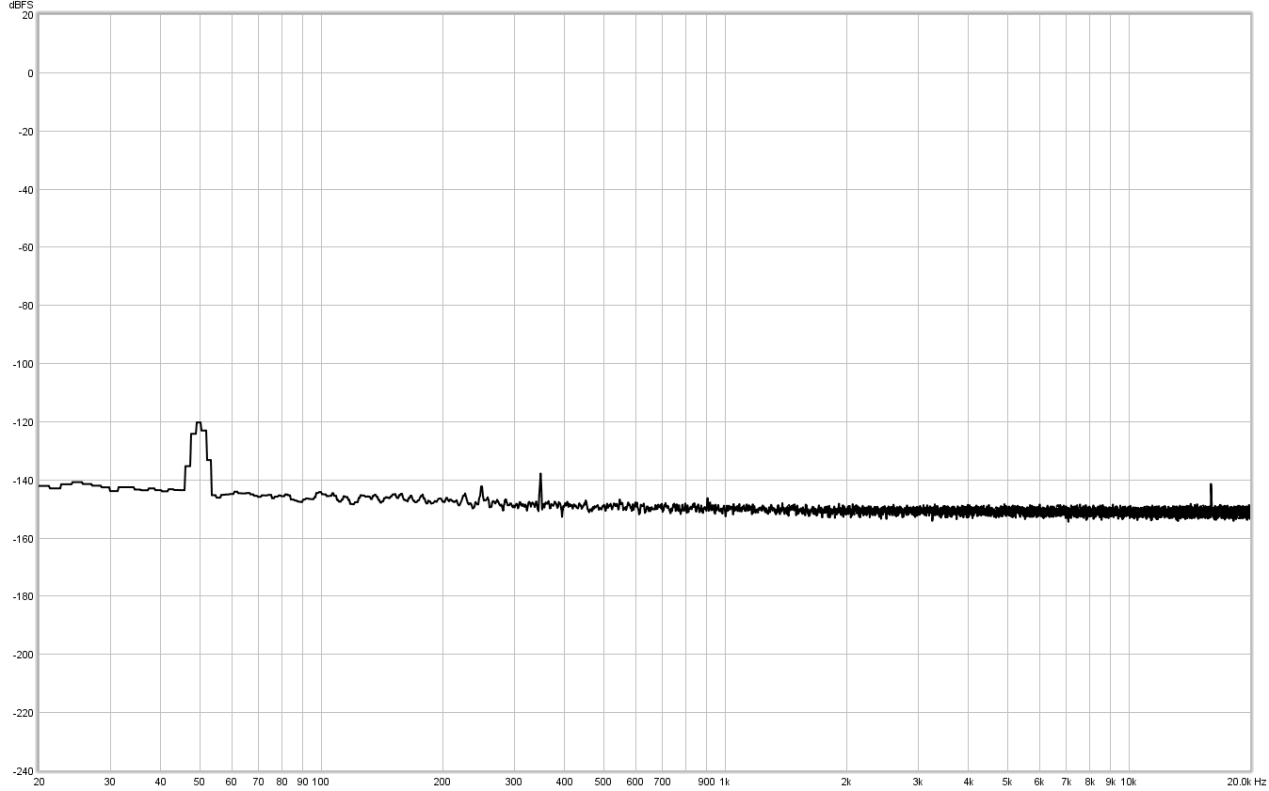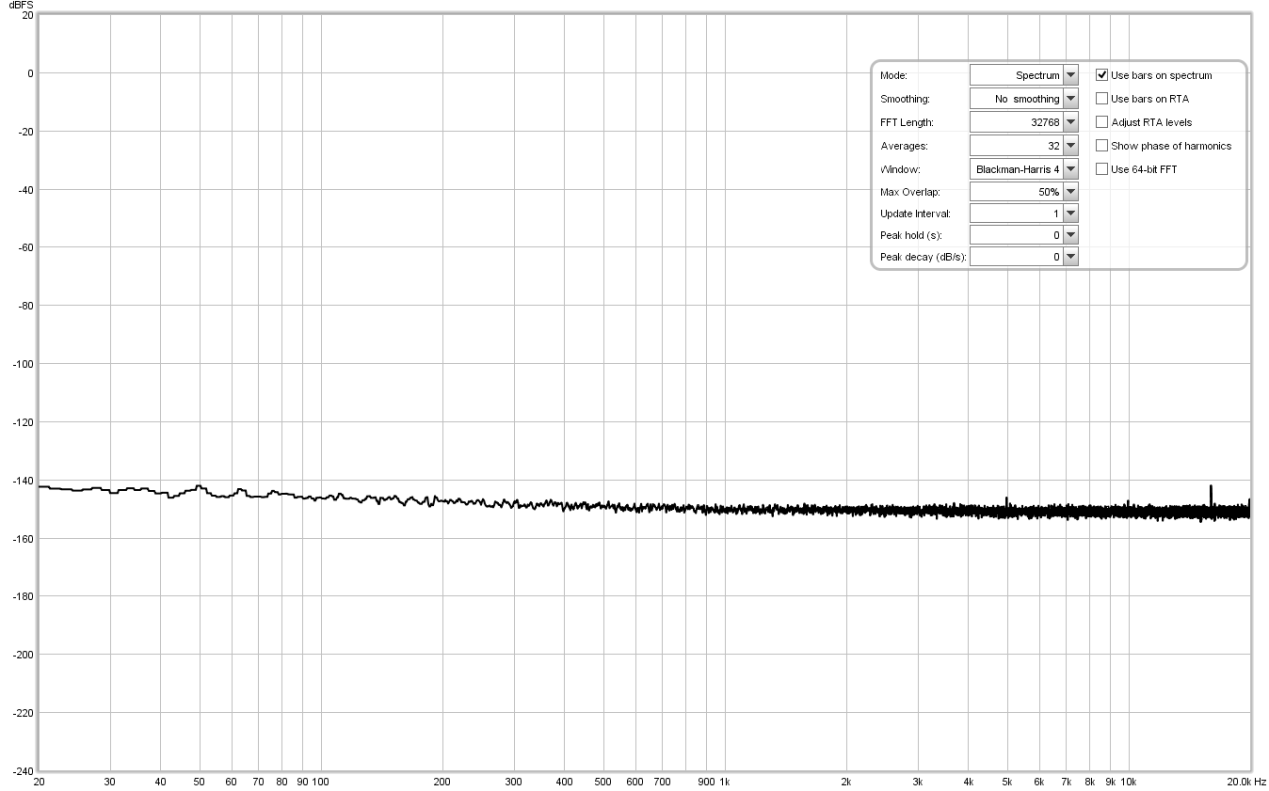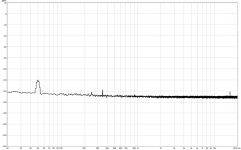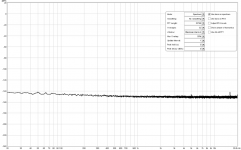Rectification ripple got to be measured on the DC power rails themselves.
Getting rid of harmonic noise, especially when including substantial FFT needles up to the mid range or higher, its worthwhile. Even if not easily noticeable at couple of meters away from the speakers. A bit of finer & softer resolution plus little better depth perspective can be usually observed. Its only after a tiny nuisance goes away we have a chance to grasp any tiny signal details it obscured. Given the transducers (speakers, headphones) are resolute enough.
Can that input signal transformer benefit from some screening test I would have also wondered...
Getting rid of harmonic noise, especially when including substantial FFT needles up to the mid range or higher, its worthwhile. Even if not easily noticeable at couple of meters away from the speakers. A bit of finer & softer resolution plus little better depth perspective can be usually observed. Its only after a tiny nuisance goes away we have a chance to grasp any tiny signal details it obscured. Given the transducers (speakers, headphones) are resolute enough.
Can that input signal transformer benefit from some screening test I would have also wondered...
@Salas
With my DMM set to AC i measure 30mV on +ve and -ve rails (each with respect to gnd) at the PSU output. Maybe the simplest solution is simply more filtering?
Transformer screening sounds like a good idea to try as well, i will have to read up on how that is bets achieved. I have mounted the toroidal power transformer at the front of the chassis, as far from the input transformers as possible - as per 6L6's illustrations again, but mounted to the baseplate directly, not on an angled bracket.
@trobbins
Power amp off

and the noise of the interface itself (interface out plugged directly to in)

Looks like the 50hz could be a ground loop with the interface?
With my DMM set to AC i measure 30mV on +ve and -ve rails (each with respect to gnd) at the PSU output. Maybe the simplest solution is simply more filtering?
Transformer screening sounds like a good idea to try as well, i will have to read up on how that is bets achieved. I have mounted the toroidal power transformer at the front of the chassis, as far from the input transformers as possible - as per 6L6's illustrations again, but mounted to the baseplate directly, not on an angled bracket.
@trobbins
Power amp off
and the noise of the interface itself (interface out plugged directly to in)
Looks like the 50hz could be a ground loop with the interface?
Attachments
If the mains frequency bump goes away with the amp power cable disconnected then that would certainly indicate a mains lead related loop with your measurement system.Looks like the 50hz could be a ground loop with the interface?
If the bump remained, then that would indicated pickup from the local environment, given you would have a signal connection going to a dummy load that has cabling back in to the amp, as well as the probe and interface to the soundcard may be a bit susceptible to nearby mains wiring or equipment.
I have to turn one bench light off to remove some noise artifacts I get, and I insert a USB isolator when using cheap soundcards to attenuate mains earth related loops.
If the amp power supply rails hold up for a few seconds when mains is turned off, then you may be able confirm any influence (or not) of a mains cable loop from your 'amp on' spectrum mains harmonic bumps.
The 1W spectrum should allow you to calculate the nominal rms voltage of those harmonics, as an indicator of how 'measureable' they would be with a meter.
Many of these mystery hums have been the transformer it self. Easy enough to find out, remove it from the chassis box. If it then goes away, a different transformer may cure it, as others have found out. Or a remote box to house the transformer/power supply.
Russellc
Russellc
Last edited:
@trobbins, i will have another look and see if i cant calculate the expected ripple V and check with cable unplugged. Any idea if REW can output the numbers from the FFT into a format that i can work with in excel?
@russelc, i suspect you may be right. There isn't much wriggle room with the toroid im using, but i've bought an L-bracket, so will see if mounting the toroid vertical has any effect.
@russelc, i suspect you may be right. There isn't much wriggle room with the toroid im using, but i've bought an L-bracket, so will see if mounting the toroid vertical has any effect.
Russellc points out another coupling risk with the measurement technique, as some hum from a transformer could also be coupling in to the measurement resistor probe circuit, and that form of bump would stop immediately that power from the amp was turned off.
I haven't looked at logging measured values from REW - I just screen capture or use snipping tool to save a spectrum result during amp measurements. REW does have an excellent forum that I've used a few times to post queries.
I think it is worthwhile trying to confirm spectrum results mean what you think they mean. One hassle is that soundcards can identify very low signal levels, which would require a lab grade meter to independently measure - and I guess you are getting down in to that territory.
If ripple on the power supply output is the concern you are chasing, then changing filter part values is one way to characterise the issue, along with ripple voltage measurements at the filter itself.
I haven't looked at logging measured values from REW - I just screen capture or use snipping tool to save a spectrum result during amp measurements. REW does have an excellent forum that I've used a few times to post queries.
I think it is worthwhile trying to confirm spectrum results mean what you think they mean. One hassle is that soundcards can identify very low signal levels, which would require a lab grade meter to independently measure - and I guess you are getting down in to that territory.
If ripple on the power supply output is the concern you are chasing, then changing filter part values is one way to characterise the issue, along with ripple voltage measurements at the filter itself.
I guess i might be biting off more than i can chew  I will have to check how it behaves upon shutdown. When it starts up i observed that the 50 hZ hum occurs immediately - which fits with the above ffts - but the remaining 100hz and up peaks gradually rise from the noise floor after a little while, 30s-1min.
I will have to check how it behaves upon shutdown. When it starts up i observed that the 50 hZ hum occurs immediately - which fits with the above ffts - but the remaining 100hz and up peaks gradually rise from the noise floor after a little while, 30s-1min.
The distance between the mbox i use to record and the toroid is probably around 30-40cm. Is that a distance you would reasonably expect the field of the toroid to extend to?
I measured 30mV AC with my cheap-o DMM at the +/gnd and -/gnd outputs of the PSU. I measure 0mV AC at the speaker outputs though...
The distance between the mbox i use to record and the toroid is probably around 30-40cm. Is that a distance you would reasonably expect the field of the toroid to extend to?
I measured 30mV AC with my cheap-o DMM at the +/gnd and -/gnd outputs of the PSU. I measure 0mV AC at the speaker outputs though...
The risk is that the mains harmonics are radiation coupled in to your measurement, rather than electrically coupled through the speaker output (and hence likely to be audible via speakers).
I think the only way to easily exclude radiation is with the 'power off' test, as that instantly stops mains related rectified voltage ripple and current flow in the amp. At 'power on' that mains related noise only starts once the valves heat up and load the power supply.
If it is a real conducted noise to the speaker, then a number of issues arise, such as is the existing noise audible, and do you get a proportional reduction in speaker output harmonic noise by reducing the ripple voltage at the power supply connection nodes. With suitable and safe probing, you may be able to measure both of those harmonic noise levels using the same measurement technique (ie. no need for a separate meter that may not really tell you what you need to know).
I think the only way to easily exclude radiation is with the 'power off' test, as that instantly stops mains related rectified voltage ripple and current flow in the amp. At 'power on' that mains related noise only starts once the valves heat up and load the power supply.
If it is a real conducted noise to the speaker, then a number of issues arise, such as is the existing noise audible, and do you get a proportional reduction in speaker output harmonic noise by reducing the ripple voltage at the power supply connection nodes. With suitable and safe probing, you may be able to measure both of those harmonic noise levels using the same measurement technique (ie. no need for a separate meter that may not really tell you what you need to know).
Last edited:
I guess the fact that the is buzz in the speakers (but only audible with your ear right up to the woofer) indicates that this is not only noise radiated through the measuring equipment. I will try the power off test as soon as i have some tinkering time, if just to be sure.
One thing i am unsure how to interpret: the noise maintains the same level irrespective of the output level. I have not tested this extensively, only up to approx 3-4V into 4ohms. I guess this also fits with noise originating in the PSU, as wouldnt you expect that noise picked up by the input transformers would be amplified with the remaining signal?
One thing i am unsure how to interpret: the noise maintains the same level irrespective of the output level. I have not tested this extensively, only up to approx 3-4V into 4ohms. I guess this also fits with noise originating in the PSU, as wouldnt you expect that noise picked up by the input transformers would be amplified with the remaining signal?
It could also just be a change in the mid-point voltage of the output stage, due to ripple on the V+ and V- supplies, given the biasing of the output stage to make the mid-point a static zero V.One thing i am unsure how to interpret: the noise maintains the same level irrespective of the output level. I have not tested this extensively, only up to approx 3-4V into 4ohms. I guess this also fits with noise originating in the PSU, as wouldnt you expect that noise picked up by the input transformers would be amplified with the remaining signal?
I'm afraid that is a bit beyond my level of EE understanding! In any case my plan going forward is:
- Rearrange transformer to get more distance to other parts of amp
- Get hold of a oscilloscope and try out the quasimodo or cheapmodo (I am still not sure this is really relevant after trying out some different stuff with snubbers, so i might go for different diodes than the solid bridges to see if they help)
- Increase PSU filtering - i am putting this off until last, though i realize it keeps coming up as an explanation for at least some of the noise...
- Rearrange transformer to get more distance to other parts of amp
- Get hold of a oscilloscope and try out the quasimodo or cheapmodo (I am still not sure this is really relevant after trying out some different stuff with snubbers, so i might go for different diodes than the solid bridges to see if they help)
- Increase PSU filtering - i am putting this off until last, though i realize it keeps coming up as an explanation for at least some of the noise...
I'd be thinking your last point is really the elephant in the room. Whether the change is to add more brute-force capacitance, or to better apply where that capacitance is.
But there is certainly no disadvantage, and much to recommend in snubbing the secondary winding, and in using fast recover diodes that aren't overly current rated.
PSUD2 is a good tool to use along with a good meter+scope/spectrum if you were going to start thinking about making changes
But there is certainly no disadvantage, and much to recommend in snubbing the secondary winding, and in using fast recover diodes that aren't overly current rated.
PSUD2 is a good tool to use along with a good meter+scope/spectrum if you were going to start thinking about making changes
Last edited:
Yeah, i am gravitating towards that option as well, but will try out the cheap stuff first! I am getting ready to invest in a good dmm as well as a scope, but im not exactly flush at the moment, nor do i have a lot of time to spend on it so it will have to wait. I will get back with some updates once i've gotten through the list! Thanks a lot for all the input!
For diodes, i notice in Nelson Pass' PSU article he notes that he prefers Schottky diodes. Would these fit the bill? They are 250V/40A rated, with a A-K-A pin arrangement. Does anything have to be done to the pins to suit the universal PSU diode boards? Also, are 11-12 c/w heatsinks appropriate for these?
MBR40250TG ON Semiconductor | Discrete Semiconductor Products | DigiKey
MBR40250TG ON Semiconductor | Discrete Semiconductor Products | DigiKey
Hello,
Looking for bill of materials for f6.
Best wishes,
Andrew
Try here:
http://www.diyaudio.com/forums/pass-labs/277850-f6-illustrated-build-guide.html#post4406647
Some folks had minor trouble with the bias adjustment range so Z1, Z2 =6.3V
and R7, R8=3.3K have been suggested
- Home
- Amplifiers
- Pass Labs
- F6 Illustrated Build Guide

